
Who Are We?
With 47% new since the pandemic, meet the people and numbers shaping Duke's workforce
Who Are We?
With 47% new since the pandemic, meet the people and numbers shaping Duke’s workforce
Each day, Duke staff and faculty dedicate their energy to a wide range of meaningful missions. They care for campus, drive the pursuit of life-saving cures and inspire the learning of young minds.
Duke employs 48,249 people, making the institution the second-largest private employer in North Carolina with a workforce slightly larger than the population of Wilson, the 21st-largest city in the state. Reflecting a spectrum of ages, races and ethnicities, the employee community continues to grow, with 47% of the workforce joining since the pandemic.
This special report, based on data from Duke Human Resources, uncovers how the workforce is evolving to help Duke meet its missions.
“It takes a collection of unique individuals to make Duke what it is,” said Antwan Lofton, Vice President for Duke Human Resources. “We have individuals here from all different backgrounds. We have our differences, and we have values that we share. But we can come together to make Duke a place that inspires people to push the envelope and do the important work of shaping the future.”
Who Are We?
With 47% new since the pandemic, meet the people and numbers shaping Duke's workforce
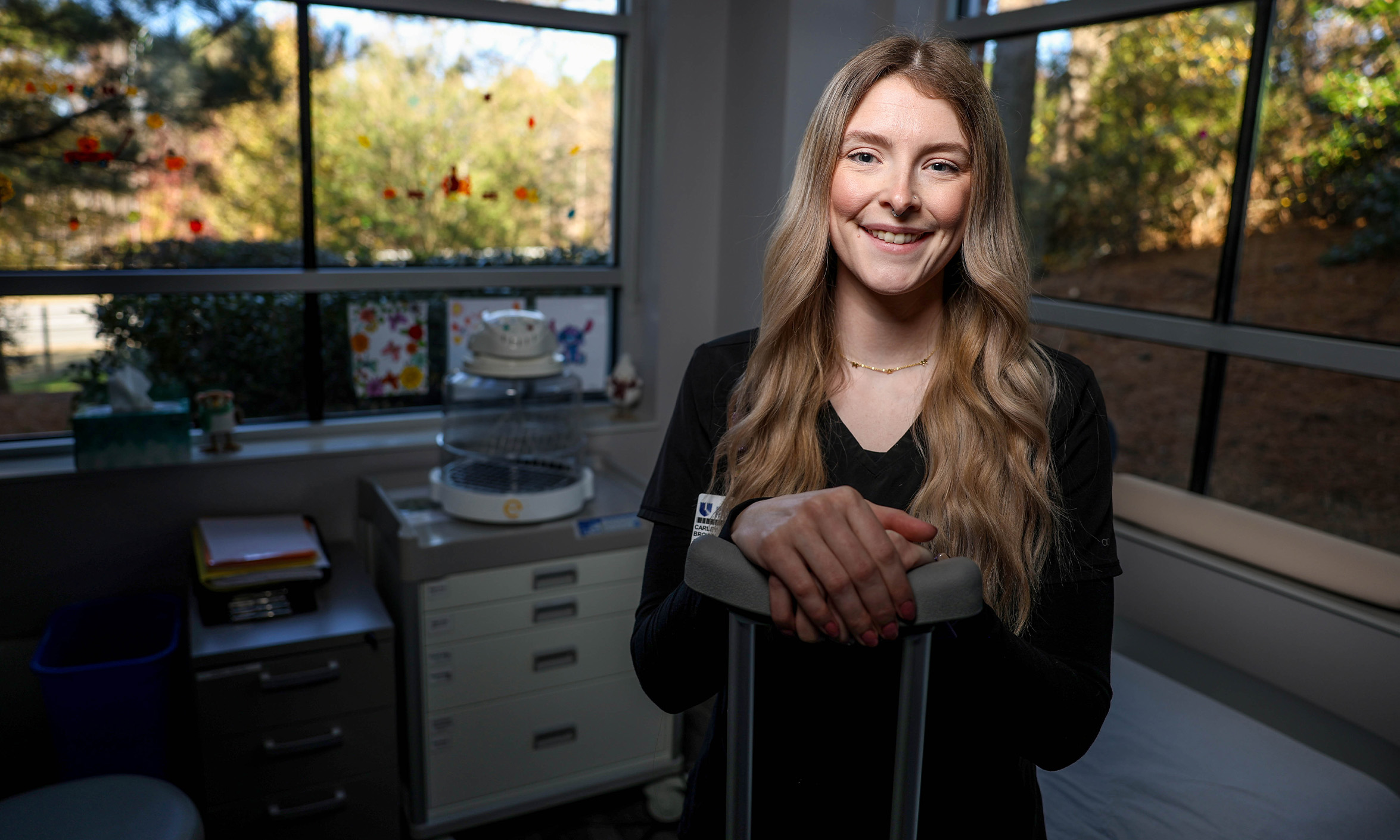
Meeting Health Care Needs
As a Duke Athletic Trainer, Carley Brown enjoys monitoring the progress of young athletes recovering from injury and guiding grandparents through treatments and exercises to regain mobility after surgeries.
But since joining Duke’s Orthopaedics Apex team last spring, her favorite moment of the day comes just after 5 p.m., when she picks up her 1-year-old son, Beckett, from day care and heads home.
“It’s a good feeling knowing I can get satisfaction out of my career and out of being a mother and wife,” said Brown, 30, who often cooks dinner alongside Beckett while he plays with toy vegetables.
For Brown, previously an athletic trainer at a Pittsboro high school, the move was inspired by work and home life balance. For Duke, Brown’s hire was part of a mission to increase capacity for care in one of the nation’s fastest-growing states.
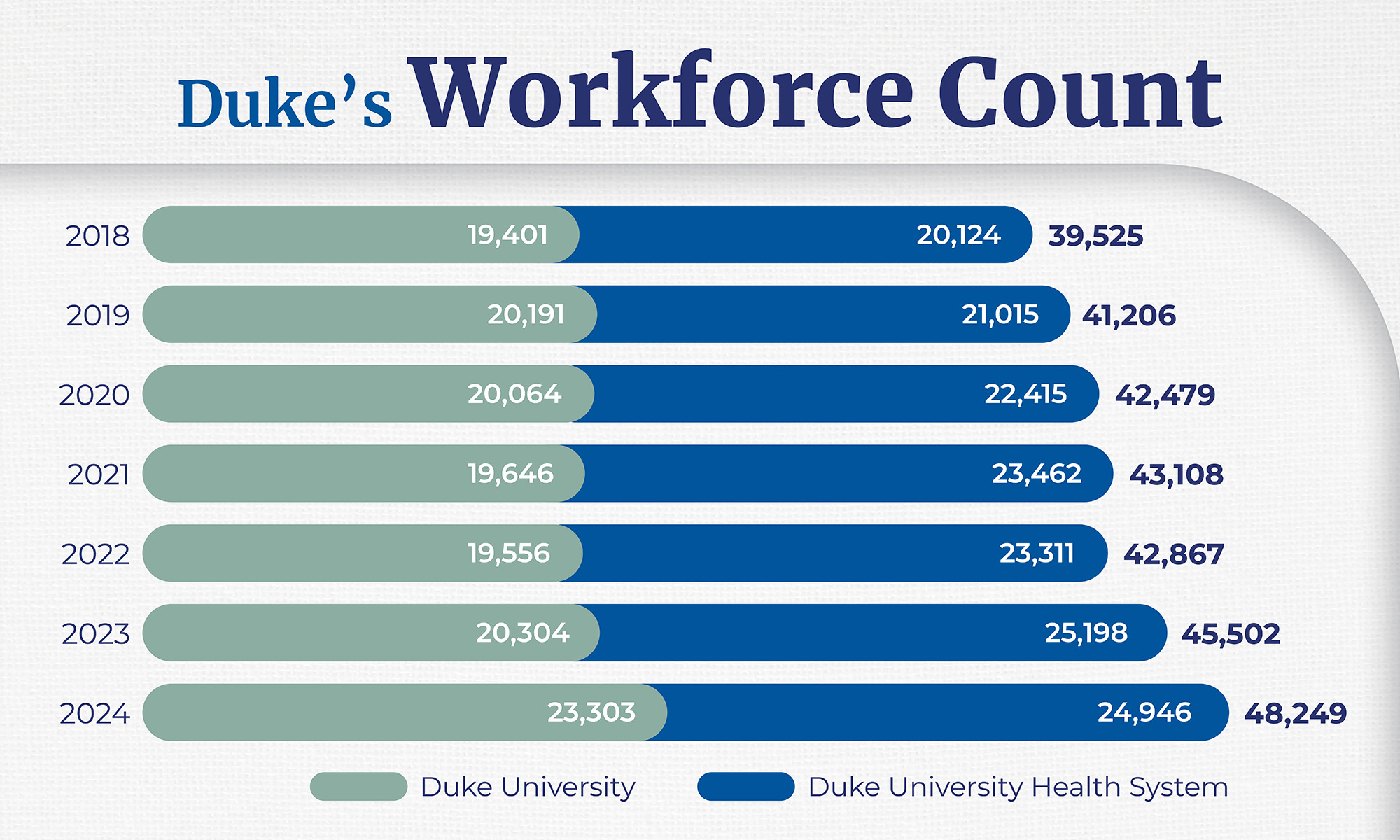
SOURCE: Duke Human Resources, 2024.
Brown is one of 8,123 individuals hired in 2023-24 by Duke University Health System, which has increased its workforce by approximately 16% since 2019. That expansion helped Duke, which has more than 400 care locations in North Carolina, serve roughly 1 million unique patients in the past fiscal year.
“Duke is a leader in addressing the critical health needs of North Carolinians,” Duke University Health System Chief Executive Officer Craig Albanese said in the 2024 “Duke in North Carolina” annual report. “We are committed to building healthier communities in our state by providing extraordinary, high-quality clinical care that is patient-centered, safe, accessible, and equitable.”
While exploring job offers, Brown found reasons to choose Duke. She recalled the compassionate care of Duke pediatricians from her childhood, appreciated the convenience of Duke’s Wake County clinics near her Fuquay-Varina home, and recognized the potential in Duke’s strong benefits.
She said, “Duke felt like the right fit.”

Diversity of Thought and Culture
When Javier Pastorino visited Duke in 2023 while considering a faculty position, he found much to admire.
Drawn by the cutting-edge technology and vibrant energy in the Department of Electrical and Computer Engineering, he became an Assistant Professor of the Practice last year.
“It was exciting to meet people with so much enthusiasm for being here and part of the community,” said Pastorino, who teaches software engineering, data management and artificial intelligence.
Originally from Uruguay, Pastorino embodies Duke’s commitment to attracting faculty from diverse backgrounds.
“At Duke, we are in the knowledge and ideas business,” said Duke University Provost Alec Gallimore. “Naturally, we want to sample from and tap into the most talented minds representing a diversity of disciplines, thought, life experiences and cultures.”
In the past decade, Duke has made steady progress toward diversity in faculty. In 2023-24, 44% of full-time faculty were women, up from 39% in 2015, while nearly 31% identified as Asian, Black, Hispanic or members of other minority groups, an increase from 23% in 2015.
Last year, Forbes recognized Duke University and Duke University Health System among “America’s Best Employers for Diversity,” evaluating factors such as gender, ethnicity, sexual orientation, age and disability inclusion.
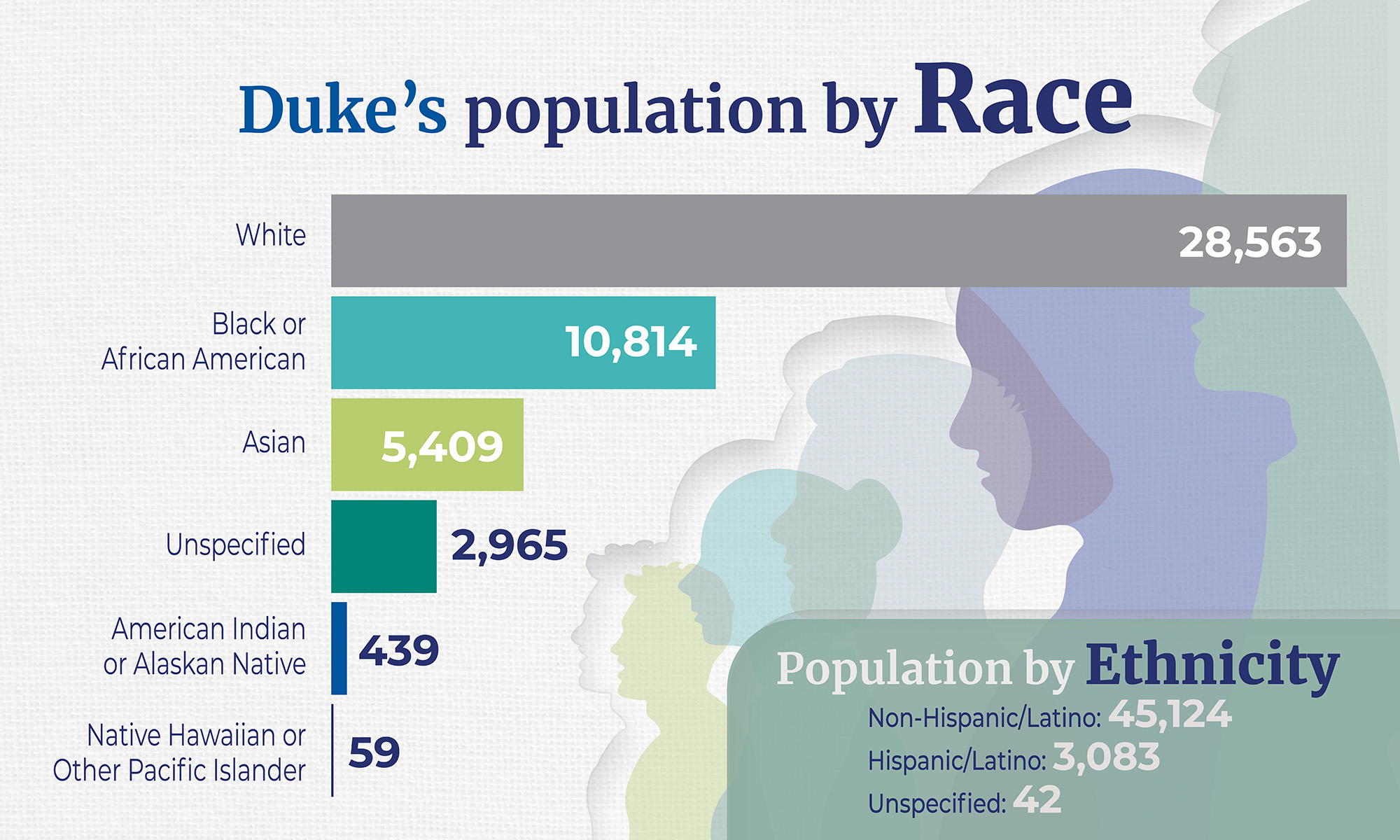
Pastorino, who occasionally sees others on campus drinking mate – a South American herbal beverage – said that in computer engineering, where competition for innovation is global, embracing diversity is essential.
“Ours is a language that goes beyond borders,” Pastorino said.
To foster a diverse faculty, Duke strives to provide resources for all to thrive. For Pastorino, this includes high-performance computing clusters for student research and workshops to refine teaching.
“We all see things differently based on our background,” Pastorino said. “When you have different perspectives, you get different ways of thinking. I may have an idea, but someone else may have a different idea that may work better.”
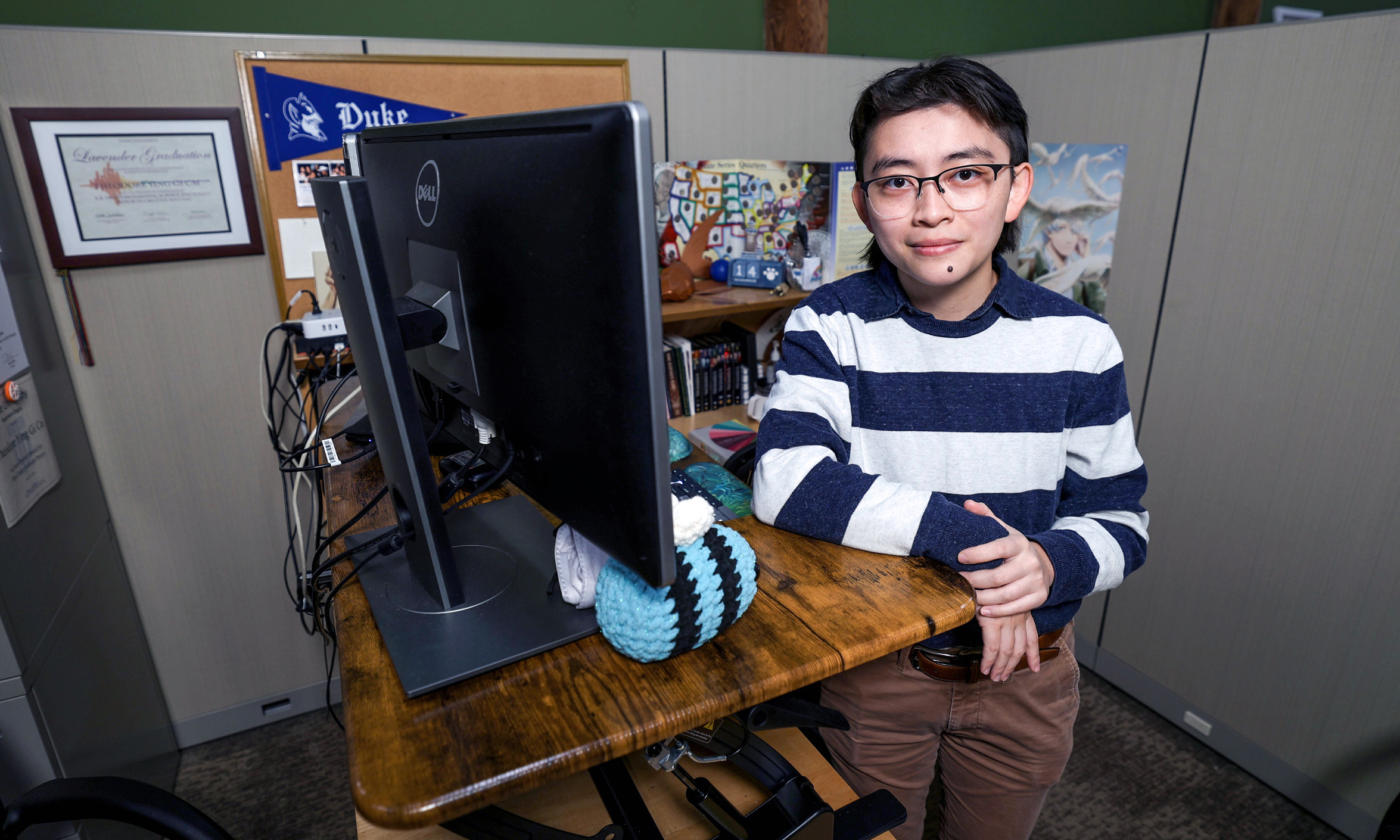
The Largest Generation
As a Program Coordinator for the Office of Student-Faculty Engagement, Theo Cai has had a front-row view of differences between Gen X and baby boomer faculty and some of the young Gen Z students who populate Duke’s campus.
He has seen a shifting tide in the digital natives who have their own lingo and vocabulary, strong views on remote work, gender identity expression and necessity of mental health benefits.
“But I don’t think that there’s some insurmountable barrier dependent on the generation,” said Cai, 25, an alum who joined Duke in 2021.
Cai is on the young side of the millennial generation, by Duke’s definition. Born in 1999, he falls within the range of people born between 1980 and 2000 that Duke identifies as millennials – now the largest generational cohort in Duke’s workforce.
Millennials at Duke make up 53% of the workforce, mirroring a national trend. The U.S. Department of Labor says that 36% of the labor force was millennial in August 2024, though its definition of a millennial is someone born between 1981-1996.
In such a large cohort, there is a variety of experiences and life situations for Duke millennials. Some are parents juggling child care and caring for aging parents. Others, like Cai, might be four years out of college, training for distance runs with housemates or writing poetry.
The generation also has a greater diversity in gender identity. Millennial and Gen Z generations are more likely than all other generations to identify as LGBTQ+, according to Gallup, with 22.3% of Gen Z and 9.8% of millennials surveyed in 2023 falling under that umbrella.
Cai, who worked for Duke’s Center for Sexual and Gender Diversity for all four of his undergraduate years, valued the relationships at the center that helped him navigate life as a transgender man.
“It made me feel safe,” Cai said. “I knew that there was a home base for me.”
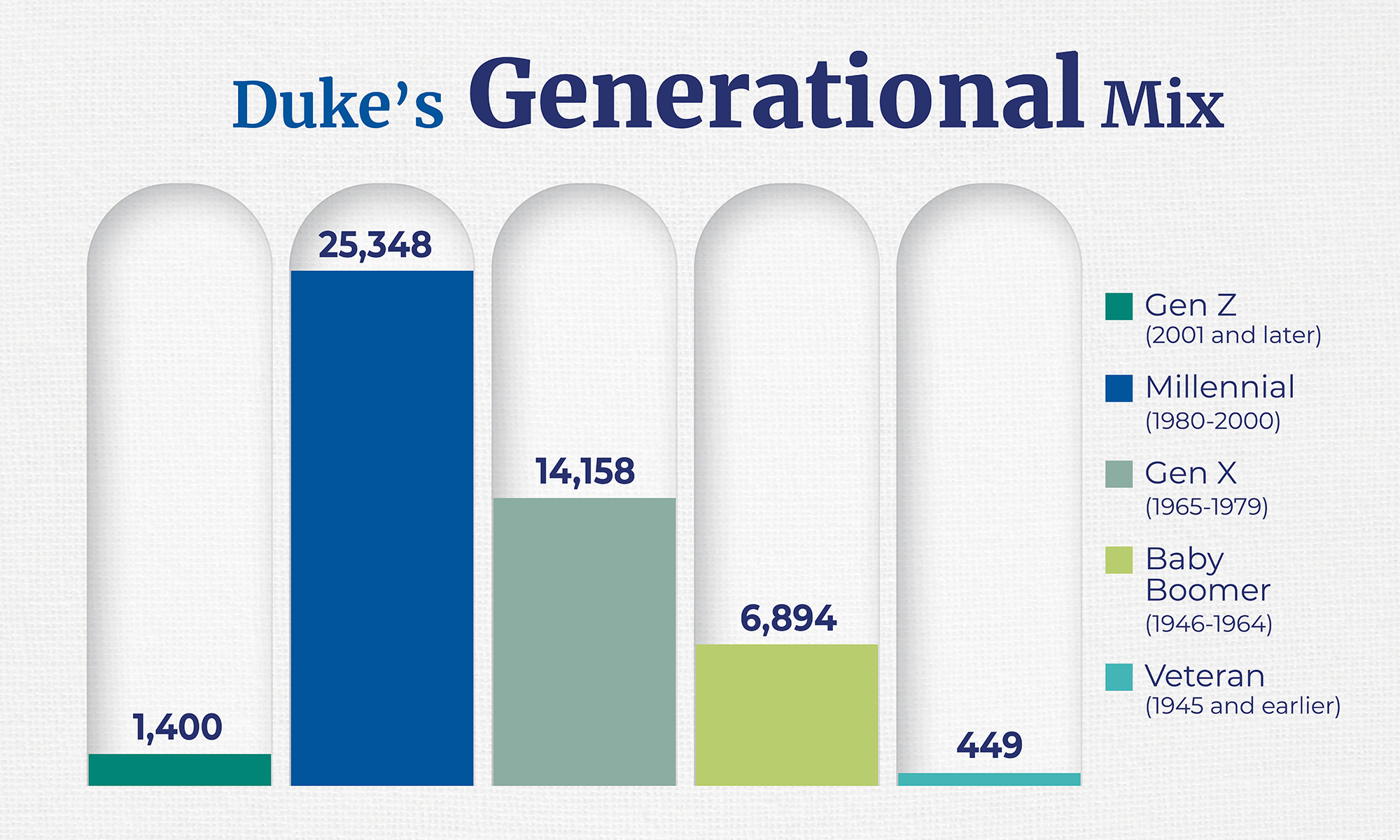
Millennials and Gen Z want to work somewhere where they feel like their employer cares about their well-being.
“I would not want to work in a place that I feel denigrated or degraded in any way,” Cai said. “I guess this is cliché, but I definitely value the relationships I’ve formed with people and staff members here at Duke.”
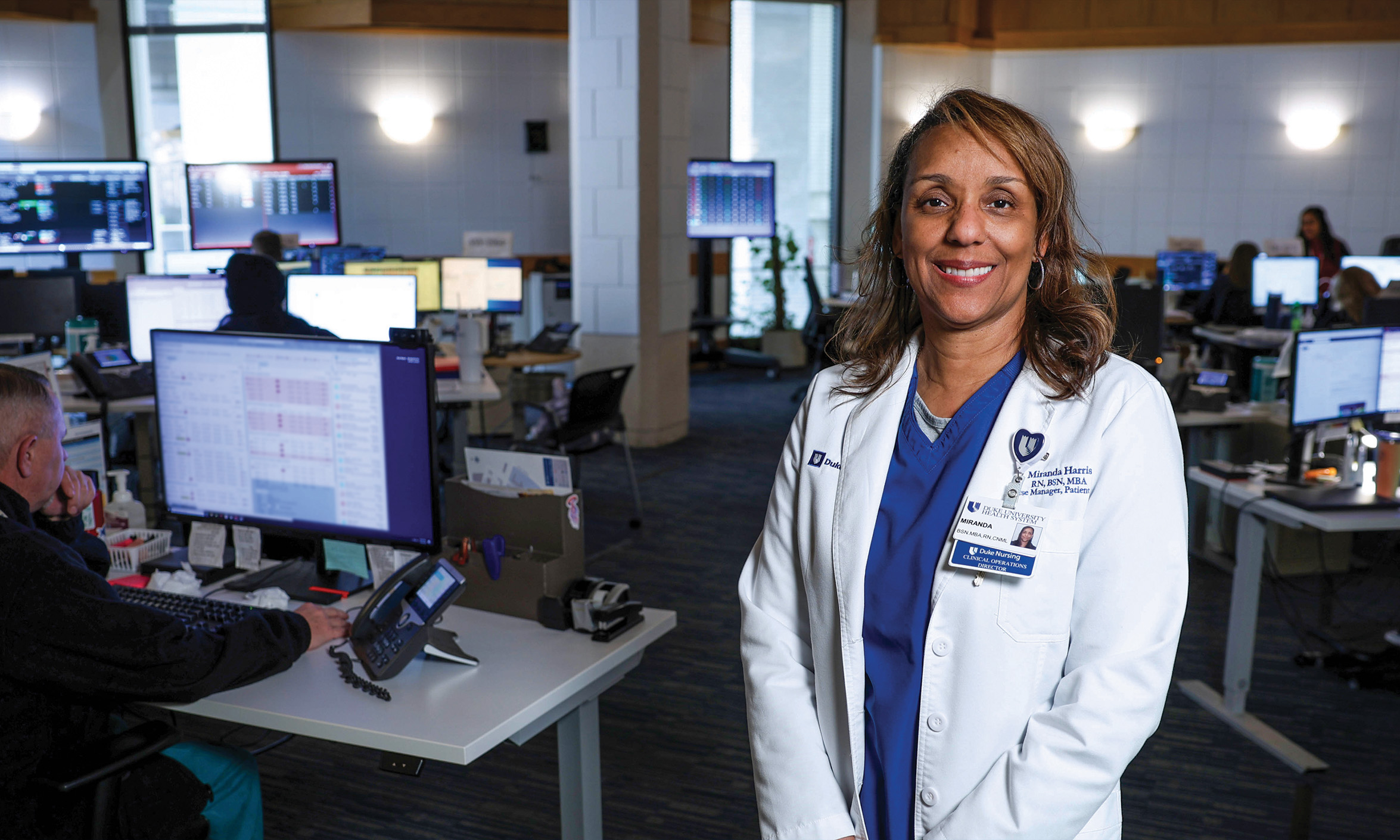
From Young Nurse to Leader
In 1989, at just 21 years old, Miranda Harris joined the nursing team in Duke University Hospital’s Medical Intensive Care Unit (MICU), caring for critically ill patients. Her goal was to ace the art of nursing and discover where the journey might take her next.
Thirty-six years later, the learning hasn’t stopped.
Driven by curiosity and compassion, Harris became a Nurse Manager in the MICU and now serves as the Senior Director of Nursing for Duke University Hospital’s Patient Flow & Transfer Center, Life Flight and Emergency Department Nursing. Throughout her journey, she embraced opportunities for growth, whether it meant helping her unit implement new digital medical recordkeeping systems, maintaining her professional certifications or earning an online Master of Business Administration degree.
“One of the things that has continually kept me here is that I have found things in my work that, I feel, have made me a better person,” said Harris, one of 19,286 women working in the Duke University Health System. Women make up 77% of the health system’s workforce and 67% of Duke’s overall workforce.
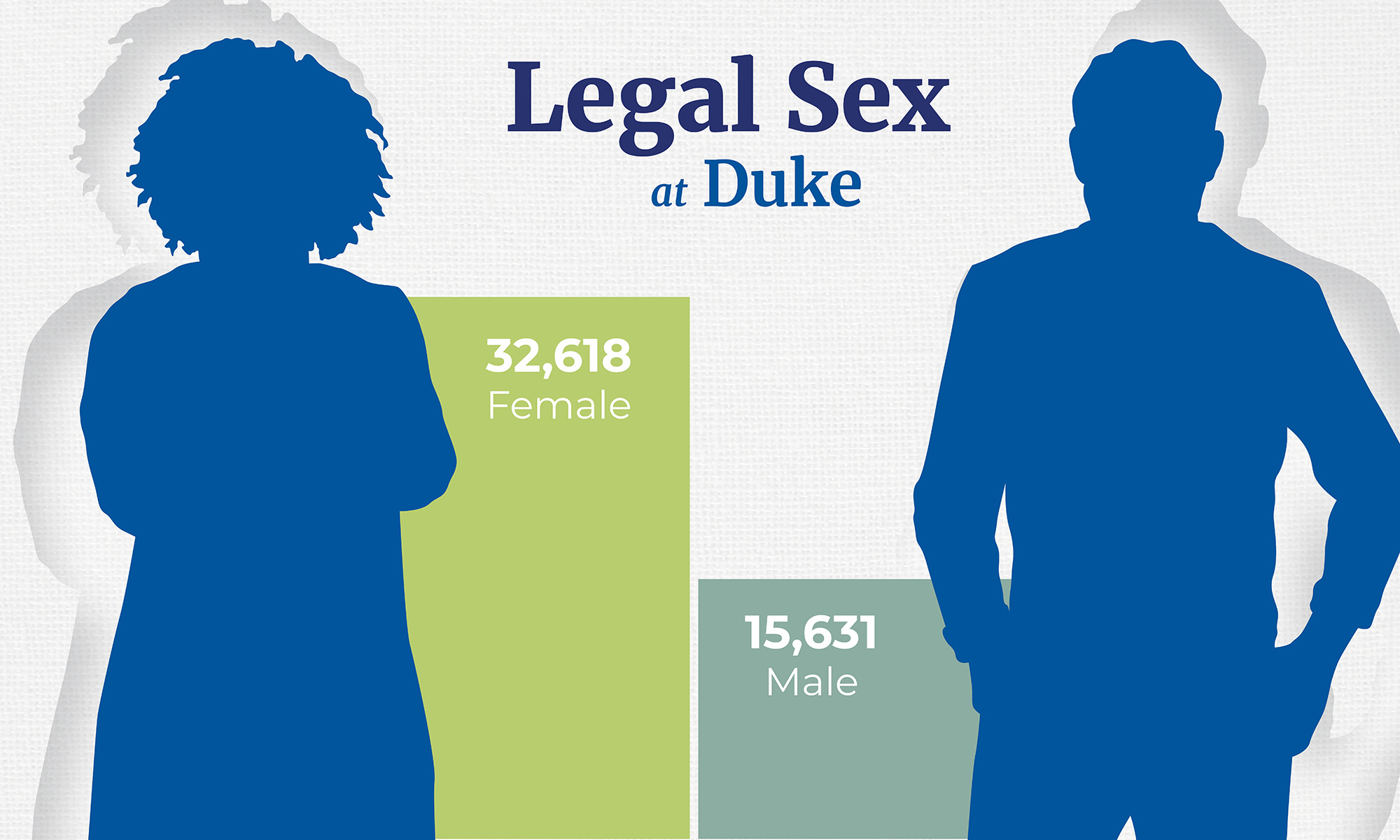
Throughout her career, Harris has relied on Duke’s employee benefits, a key factor in Duke’s inclusion on Forbes’ latest list of “America’s Best Employers for Women.”
She used Duke Children’s Campus, an on-campus day care for benefits-eligible staff and faculty, to care for her two sons, now in their 20s.
While on campus, she often crosses paths with her son, Ronald, a student at the Duke University School of Medicine. She fondly recalls their first clinic encounter in 2021, when she hurried to grab her white coat to match his.
“We had to have our white coats on together,” Harris said.

Valuing People, Benefits, and Balance
Stephen Cook grew up watching his father work as a plumber at Duke. He saw how devoted Billy Cook was to the people he worked with, and Stephen absorbed the trade from years of observation.
In 1999, a year after Billy Cook died suddenly at age 57, Stephen Cook decided to follow in his father’s footsteps.
Cook left his job as a deputy for the Orange County Sheriff’s Office and took a position in Duke’s plumbing department – working for the same supervisor his father had. He worked alongside his dad’s former co-workers and realized what he had been missing during his demanding job in law enforcement.
“It took away a lot of quality time with my wife and my son,” Cook said.
More than 25 years later, Cook is still in the plumbing department in Duke Facilities Management, with about the past decade spent as a Projects and Building Maintenance Coordinator. He schedules and coordinates plumbing needs across the University campus.
“What made me stay was the people I work with that I enjoy working around,” Cook said.
It’s not uncommon for someone to stay at Duke a while; the average length of service at Duke is 8.8 years. Nationally, the median service length is 3.9 years – the lowest it has been since 2002, according to the U.S. Bureau of Labor Statistics.
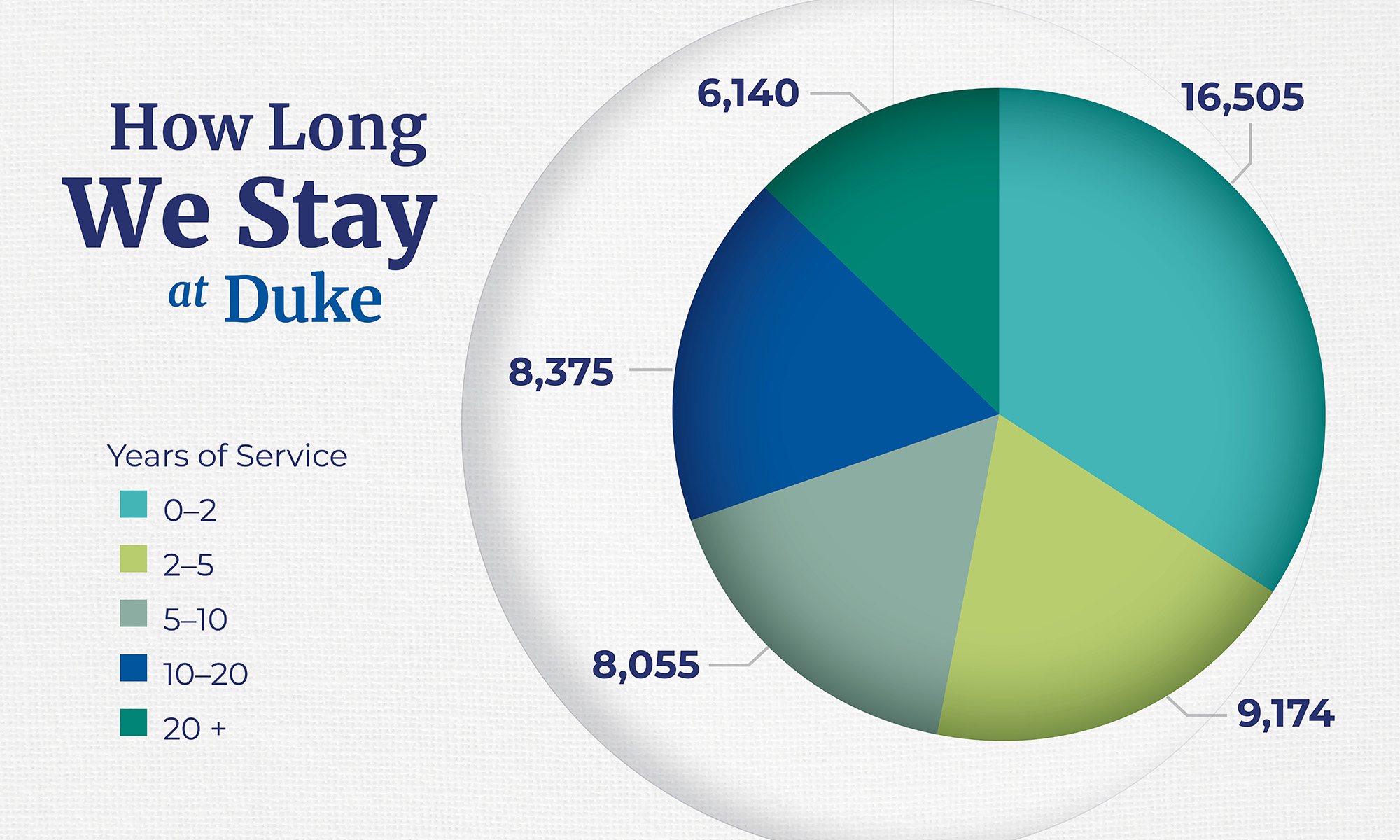
Cook credits Duke’s people, work-life balance, and medical benefits, which gave him the flexibility to use Family and Medical Leave Act time to care for his mother before she died.
“That really meant the most to me of all,” he said. “I don’t think you can get any better than the benefits.”
Send story ideas, shout-outs and photographs through our story idea form or write working@duke.edu.
Follow Working@Duke on X (Twitter),FacebookandInstagramand subscribe onYouTube.